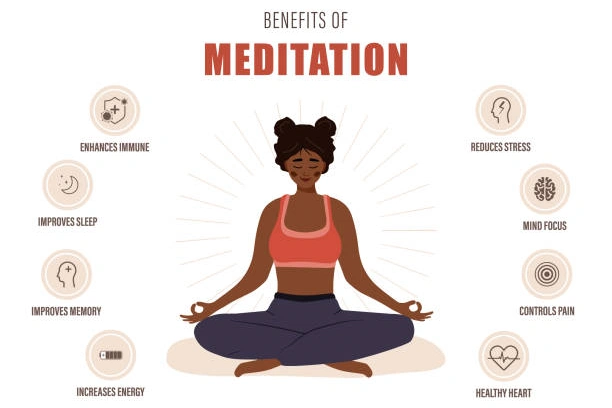The Significance of Meditation—Western Medicine’s Perspective
Meditation is the best method to cultivate well-being and wisdom. Through step-by-step practice, it can enhance work efficiency, increase intelligence, strengthen the body and mind, and lead to a correct understanding of life and the universe.
Meditation can greatly improve the quality of life by tapping into “human nuclear fusion.” We consume energy every day, and one of the common struggles modern people face is a lack of energy. Why? Because the output exceeds the input. Some people boast about enduring hardship but refuse to meditate, thus missing the opportunity to elevate their lives.
Those who wish for blessings and wisdom should diligently practice meditation. Over time, this will inevitably lead to greater clarity and wisdom, with fortune appearing in their lives.
If one practices meditation and achieves mental focus, their mood will gradually become more cheerful, which will enhance resistance to illness. Eventually, one can conquer health issues, turning weakness into strength. When the mind is still, it allows the brain’s thoughts to rest, making meditation the best form of relaxation. Daily meditation can help you understand yourself better and increase self-confidence, revealing the true value of life and bringing incredible benefits. In other words, meditation helps you befriend your inner self, leading you toward perfection. Gradually, as you master the inner world, your life will unfold in subtle ways, blossoming with light.
Meditation is not a religious act but rather a spiritual science with a history of thousands of years. For beginners, try meditating consistently for 100 days. If you strictly adhere to daily meditation, there is no reason you won’t benefit from it. People should not bind themselves to external, limited matters; meditation allows for the exploration of one’s inner, infinite treasures, expanding the mind to embrace all things.

Western Medicine’s Perspective on Meditation
When meditation reaches a state of tranquility, one can not only experience extremely pleasant psychological effects but also undergo many physiological changes, which bring beneficial effects to the body. These changes affect all body systems, and research on this began in the 1950s. Numerous studies have confirmed the physiological effects of meditation, summarized as follows:
Nervous System:
In a meditative state, significant changes occur in the electroencephalogram, distinct from those during sleep. The brain’s cortical inhibition increases and spreads, potentially altering perception; the autonomic nervous system, which regulates internal organ functions, also changes, with sympathetic nervous activity decreasing and parasympathetic activity increasing. This affects bodily functions, such as increased tear secretion and the production of thin saliva.
Circulatory System:
In a meditative state, heart rate slows, blood pressure often decreases, and microcirculation improves throughout the body. The time intervals between heart contractions change beneficially, with an increase in the amplitude of the T wave on the electrocardiogram. Experiments show that meditation can bidirectionally regulate cerebral blood flow, increasing when it is insufficient and decreasing when it is excessive, returning it to normal. Multi-channel blood flow measurements during meditation show that focusing on different areas of the body can directly influence circulation and redistribute blood flow.
Respiratory System:
In meditation, breathing gradually becomes gentle, slow, even, deep, and prolonged, with the respiratory rate slowing. Lung capacity increases, enhancing oxygen renewal, capillary permeability, and gas exchange.
Digestive System:
After entering a meditative state, gastrointestinal activity increases, stomach function improves, digestion and absorption are enhanced, bowel sounds are more frequent, and gas expulsion increases. Bile secretion is also stimulated.
Endocrine System:
Meditation influences various aspects of the endocrine system. It can alter plasma nucleotide levels and normalize the CAMP/CGMP ratio, supporting meditation’s “balancing yin and yang” effect. It can correct hormonal imbalances, providing evidence for meditation’s benefits in “nurturing essence and refining energy” and “strengthening the kidney.”
Immune System:
After meditation, eosinophil counts rise, white blood cell phagocytosis increases, and levels of salivary SIgA and lysozyme significantly increase, indicating enhanced cellular and humoral immune responses. This shows that meditation can improve the body’s resistance to disease.

Additionally, studies have found that the body’s basal metabolic rate and oxygen consumption decrease in a meditative state.
In summary, meditation leads to beneficial changes across various physiological indicators. The training process, from the beginning to achieving tranquility, starts with psychological adjustments. Under a good mental state, the functions of the nervous system develop in a coordinated manner. This further impacts the entire body through neural and neuroendocrine pathways, leading to the healthy and coordinated functioning of all body systems.
This process encompasses changes from psychological to physiological, from the mental to the physical, and from specific areas to the entire body.







